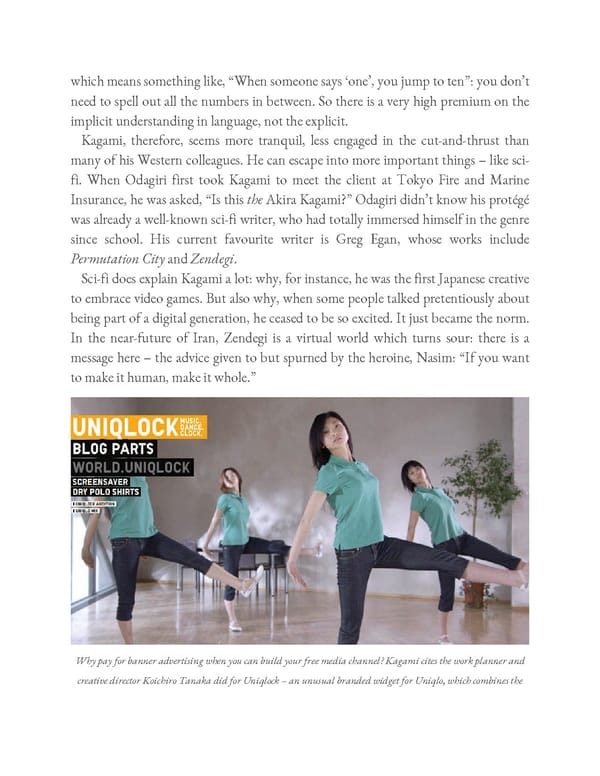which means something like, “When someone says ‘one’, you jump to ten”: you don’t need to spell out all the numbers in between. So there is a very high premium on the implicit understanding in language, not the explicit. Kagami, therefore, seems more tranquil, less engaged in the cut-and-thrust than many of his Western colleagues. He can escape into more important things – like sci- fi. When Odagiri first took Kagami to meet the client at Tokyo Fire and Marine Insurance, he was asked, “Is this the Akira Kagami?” Odagiri didn’t know his protégé was already a well-known sci-fi writer, who had totally immersed himself in the genre since school. His current favourite writer is Greg Egan, whose works include Permutation City and Zendegi. Sci-fi does explain Kagami a lot: why, for instance, he was the first Japanese creative to embrace video games. But also why, when some people talked pretentiously about being part of a digital generation, he ceased to be so excited. It just became the norm. In the near-future of Iran, Zendegi is a virtual world which turns sour: there is a message here – the advice given to but spurned by the heroine, Nasim: “If you want to make it human, make it whole.” Why pay for banner advertising when you can build your free media channel? Kagami cites the work planner and creative director Koichiro Tanaka did for Uniqlock – an unusual branded widget for Uniqlo, which combines the
 Ogilvy on Advertising in the Digital Age Page 370 Page 372
Ogilvy on Advertising in the Digital Age Page 370 Page 372